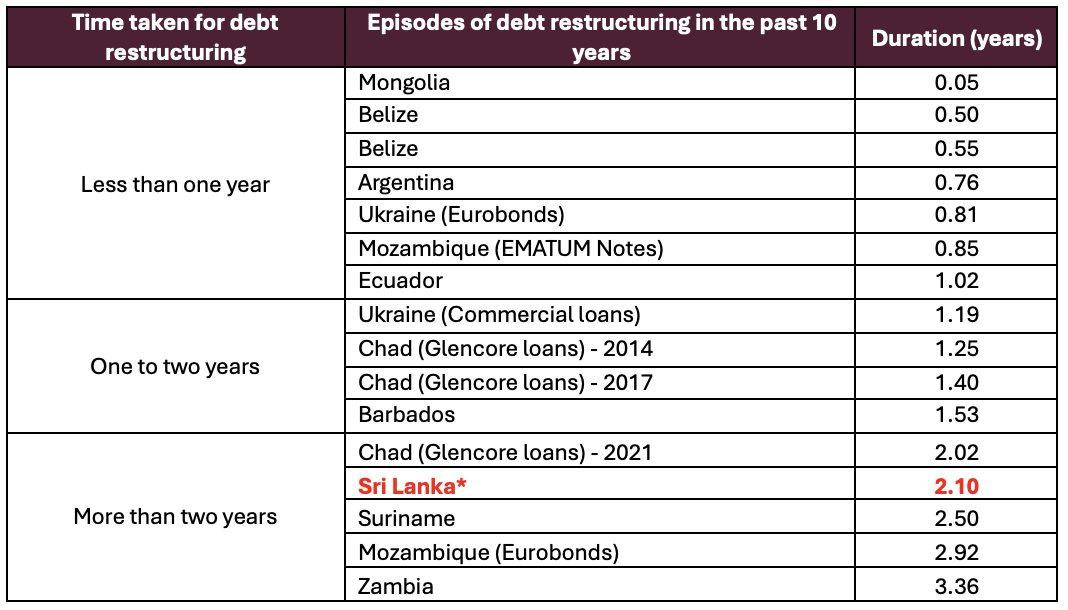Fact Check
In parliament, MP Lakshman Kiriella claimed that (a) no country has taken as long as Sri Lanka (2.5 years) to complete the debt restructuring process, and (b) every country completed it within 1.5 years. To verify this claim, FactCheck.lk consulted the most comprehensive dataset on Debt Restructuring Episodes (associated with a paper by Christoph Trebesch) and the updates to it by Verité Research.
The time taken to restructure is calculated as the time between the date of suspending repayments and the date to finalise the debt exchange. At the time of the statement, it was 2.1 years since Sri Lanka suspended debt repayments. FactCheck.lk evaluated the MP’s 2.5-year frame as a (reasonable) forward-looking view of when Sri Lanka will complete its debt restructuring.
Historically, restructuring debt was a slow process. As systems and structures have evolved, the process has become faster. The dataset shows:
- Between 1975 and 1995, there were 156 debt restructuring episodes, averaging 3.7 years to complete.
- Between 1995 and 2015, there were 28 episodes, averaging 1.4 years.
- Between 2015 and 2020, there were 9 episodes, averaging 1.1 years.
Exhibit 1 shows that since 2014, out of 15 episodes (excluding Sri Lanka) of debt restructuring, 3 have taken 2.5 years or longer, and only 10 were completed under 1.5 years.
Even if the MP was referring to recent years, his claim is incorrect on both counts: only 66% of the episodes were completed within 1.5 years, and 20% took 2.5 years or longer.
Therefore, we classify the MP’s claim as FALSE.
Additional note 1: On June 26, 2024, in a special address to the nation, President Ranil Wickremesinghe made the opposite claim to MP Kiriella, stating that no country in recent history has achieved an ‘exceptional victory’ within this timeframe. The same data was used to show that this claim was also incorrect. Sri Lanka is neither the slowest nor the fastest, but within the last 10 years, it has been in the bottom 25% in terms of speed to restructure.
Additional note 2: The IMF publishes data on the duration to restructure measured from the date of the IMF staff level agreement. Even on those durations time taken by Sri Lanka evaluates about the same: not the slowest, but not among the fastest either. But it’s not a standard measure, as countries can restructure debt without an IMF agreement, and can also enter an IMF agreement prior to suspending debt payments.
Exhibit 1: Time taken to complete debt restructuring

*Sri Lanka’s debt restructuring process is ongoing and is calculated as end of May 2024
Sources
Asonuma, Tamon and Christoph Trebesch (2016): “Sovereign Debt Restructurings: Preemptive or Post-Default”, Journal of the European Economic Association Vol 15(1), Pages 175-214
Cruces, Juan and Christoph Trebesch (2013): “Sovereign Defaults: The Price of Haitrcuts”, American Economic Journal: Macroeconomic, in case you use additional restructuring characteristics (haircut size, amounts restructured, etc.) and its associated datasets available at: https://sites.google.com/site/christophtrebesch/data


